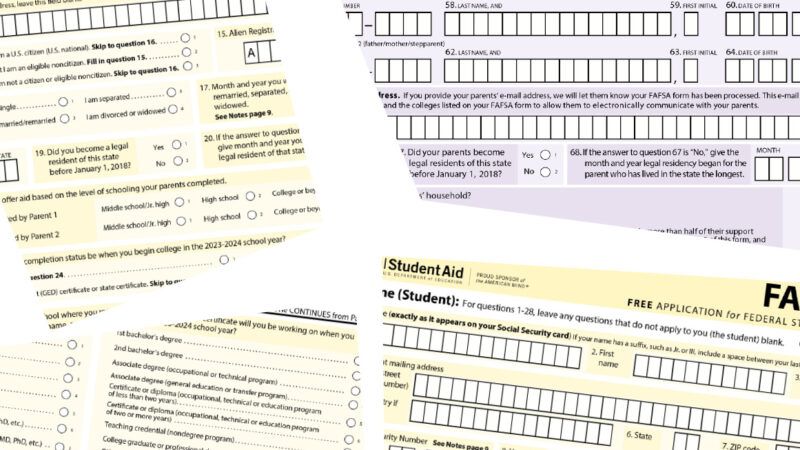The Government Screwed Up College Financial Aid Applications
The new FAFSA form is like HealthCare.gov but for college students.

The U.S. Department of Education has jeopardized access to financial aid for millions of college students and their families—all because it failed to create a functional online form.
In what is possibly the largest web-based government fumble since the rollout of HealthCare.gov in 2013, the updated Free Application for Federal Student Aid (FAFSA) online form has been a glitch-filled fiasco, infuriating families and universities alike.
Students seeking federal loans and grants must use the FAFSA form, but it's also essential for those who don't intend to take federal money, since the vast majority of U.S. colleges use it to determine institutional financial aid.
The current problems stem from the 2021 Consolidated Appropriations Act, which aimed to simplify the FAFSA process. That's a wise goal, but the department's botched implementation has generated so many technical issues that millions of students have been left in the lurch.
The updated form had a "soft launch" on December 31, 2023—more than two months later than the form's typical release date. Despite that delay, the department did not extend the deadline for families to complete the form. And while the new form was, in fact, shorter than previous versions—more than half of the questions were cut by importing parents' tax data directly from the IRS—the extra time the department took did not mean it crafted a more functional process overall. It instead released a glitchy FAFSA that many families found enraging and often impossible to complete.
"At one point, the site was telling me that both my daughter and I had already started forms when in fact neither of us had," finance reporter Ron Lieber wrote in The New York Times in January. "I wish they'd waited another year and gotten this right by late in the summer, so everyone could have a full academic-year cycle to get used to the new form and formulas for determining aid."
The form was plagued by issues for months after its rollout. FAFSA's website contains a long list of technical complaints, most of which require complicated workarounds to fix.
Adding insult to injury, the department revealed in March that around 200,000 completed forms contained inaccurate information and would need to be recalculated. The error affected students who reported their own assets, such as personal savings or investments. Failure to include those assets resulted in some students being given larger financial aid estimates than they were actually eligible for.
These issues have had a significant impact on FAFSA completion rates. By mid-April, submissions were down by 36 percent. In a typical year, more than 15 million students complete the form. This drop means that millions of students who likely would have completed a FAFSA in prior years will now miss out on financial aid.
The National College Attainment Network warned of a "catastrophic drop in college enrollment this fall, potentially worse than during the COVID-19 pandemic," in a March statement, adding that there were "inexcusable and frustrating FAFSA technological problems for many students and families in January and February."
Students and families are not alone in their fury. Colleges have also been affected, as most rely on the FAFSA form to determine their own financial aid packages. The delayed FAFSA information, along with considerable errors in the data, have made it challenging for universities to offer aid to admitted students.
Marc M. Camille, president of Albertus Magnus College, told The Washington Post that the delays in getting information to students and the inaccuracy of the information the college is receiving is "getting scary."
"On the one hand, you want to take at face value that if we receive [records,] they're accurate," Camille said. "But the ones we've received to date have had errors."
Instead of streamlining the FAFSA process, the department has made it even more complicated, adding stress to an already daunting process. The financial futures of millions of students hang in the balance because the government couldn't create a functional form.
This article originally appeared in print under the headline "The Education Department Fumbled FAFSA."

Show Comments (41)